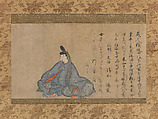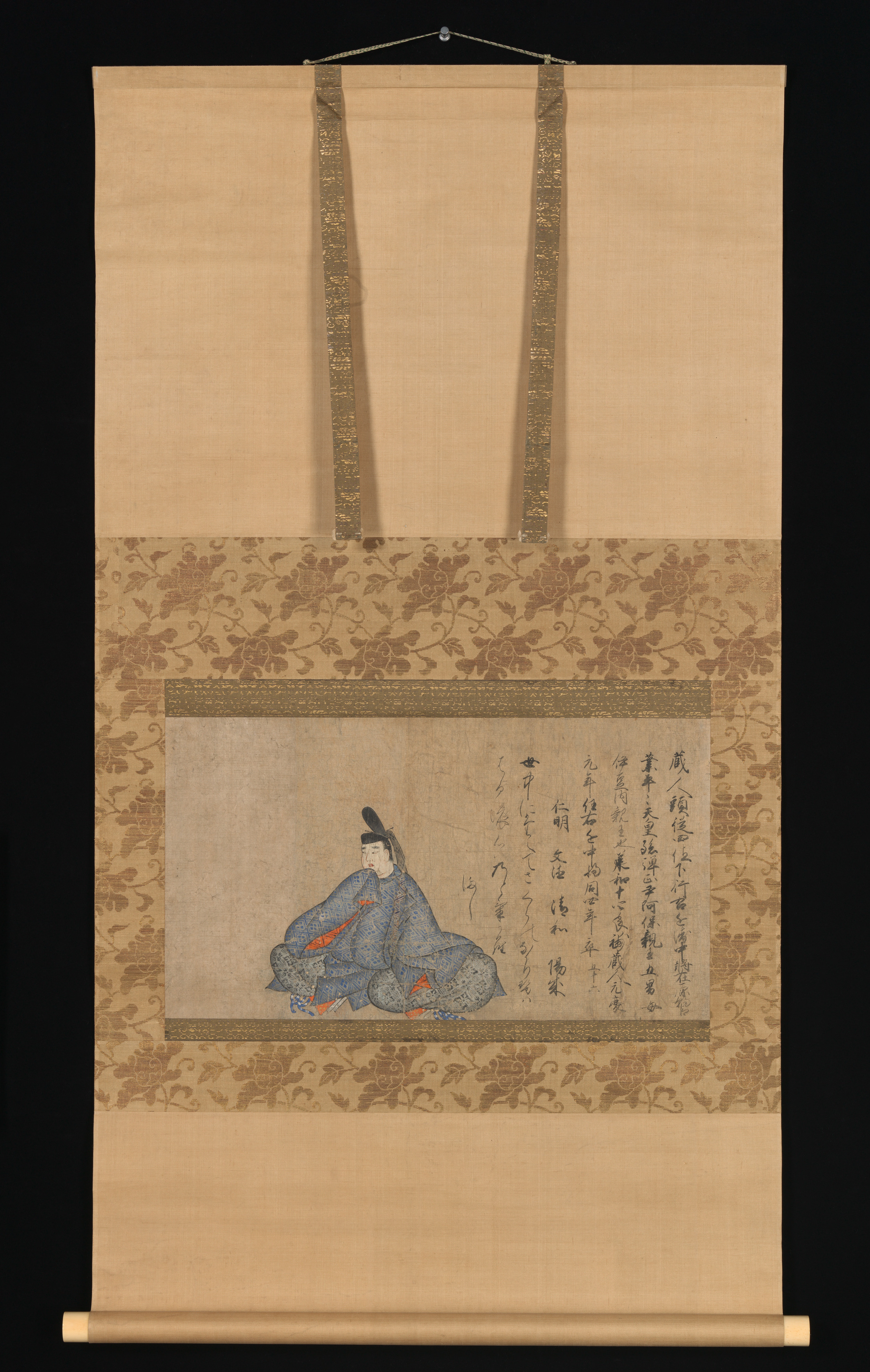Ariwara Narihira, from the “Fujifusa Version” of Thirty-six Poetic Immortals (Fujifusa-bon Sanjūrokkasen emaki)
Not on view
The poetry competition (uta-awase), a popular and challenging courtly pastime, became a frequent subject of illustrated handscrolls. During the Heian period (794–1185), selections of renowned “poetic immortals,” often thirty-six in number, were made by scholar-poets of the aristocracy. This imaginary portrait of the ninth-century courtier Ariwara no Narihira (825–880) was once part of a handscroll executed in the yamato-e (“Japanese-style painting”) mode of illustration, with details painted in thin, even lines. The tightness of the brushstrokes is characteristic of fourteenth-century works. To the left of the headnote (in Chinese) is one of Narihira’s most famous waka (31-syllable poems), here remarking on the emotional tug of seeing cherry blossoms bloom and scatter in the spring.
Yo no naka ni
taete sakura no
nakariseba
haru no kokoro wa
nodokekaramashi
If only there were no
cherry trees in this world,
our hearts in springtime
would then perhaps
not be so aflutter.
—trans. by John T. Carpenter
This image cannot be enlarged, viewed at full screen, or downloaded.
This artwork is meant to be viewed from right to left. Scroll left to view more.



